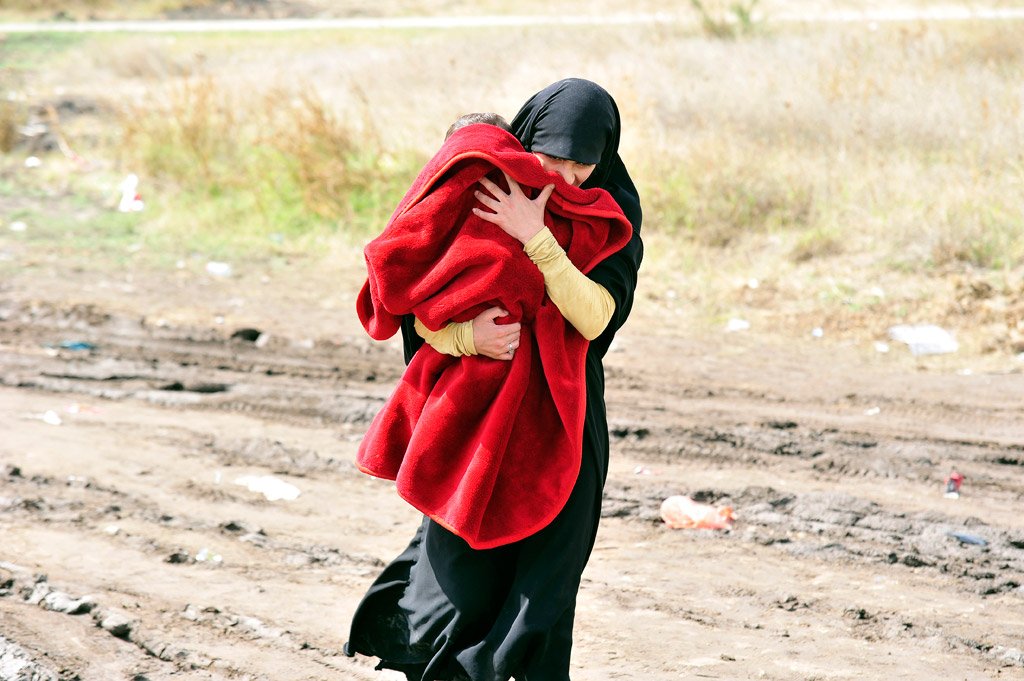At a rally in Melbourne, Florida, last weekend, US President Donald Trump riled up his crowd by going back to a trope from his campaign. Referring to a Swedish attack committed by immigrants, that did not in fact happen, Trump made an explicit link between increased immigration and rising crime rates.
“We've got to keep our country safe,” Trump said. “You look at what’s happening last night in Sweden.”
“Sweden?” he continued. “Who would believe this? Sweden. They took in large numbers. They’re having problems like they never thought possible.” The large numbers he is referring to, we’re left to assume, are refugees.
The Trump administration would later walk back the president’s claim of the Swedish terrorist attack, saying that Trump was referring to “rising crime and recent incidents in general and not referring to a specific incident.”
Trump is not the first to conflate immigration and crime, and he won’t be the last.

Read more: 11 Facts About the 65 Million Refugees in the World
According to a study from Pew Research Center, 71% of US Republicans and 34% of Democrats believed that immigrants made crime rates worse.
However, this is patently untrue.
According to the New York Times, census data between 1980 and 2010 consistently reveals that immigrants are less likely to commit crimes than natural-born US citizens.
When it comes to refugees, the numbers are even lower.
In the United States, not a single refugee has committed a terrorist attack since 1980. A study by New American Economy found that out of 10 communities that received an influx of refugees between 2006 and 2015, nine saw a decrease in their crime rates, while just one community experienced an uptick in crime.
The United States accepts a much smaller proportion of refugees than most countries. In fact, just 10 countries accept more than half of the world’s refugees, according to Amnesty International.

Read more: Half of All Child Refugees Aren't in School: Why This Is a Massive Problem
The lion’s share of these countries are located in the Middle East and Africa, with Jordan and Turkey being home to over 2 million refugees each.
So, have these 10 countries experienced rising crime rates in the past 15 years?
We compared refugee resettlement and crime rates over time, using intentional homicide data from the World Bank (which covers 2003-2014 and represents the amount of homicides per 100,000 people) and crime index statistics (2012-2017) from Numbeo, a database of user-contributed data about cities and countries around the world. The crime index is based off of an online survey conducted by Numbeo, with a score of 1 representing a very low crime rate and 100 a very high crime rate.
1. Jordan (2.7 million refugees)
Intentional Homicides:
2005: 1.3/100,000 vs. 2012: 2.3/100,000
Crime Index:
2012: 19.14 vs. 2017: 43.14.
2. Turkey (2.5 million)
Intentional Homicides:
2003: 4.3/100,000 vs. 2012: 4.3/100,000.
Crime Index:
2012: 26.38 vs. 2017: 41.09.
3. Pakistan (1.6 million)
Intentional Homicides:
1996: 6.9/100,000 vs. 2012: 7.8/100,000.
Crime Index:
2012: 58.78 vs. 2017: 54.38.
4. Lebanon (1.5 million)
Intentional Homicides:
2008: 4.5/100,000 vs 2014: 4.3/100,000.
Crime Index:
2012: 59.90 vs 2017: 49.16.
5. Iran (979,400)
Intentional Homicides:
2012: 4.8/100,000
Crime Index:
2012: 51.86 vs. 2017: 50.9.
6. Ethiopia (736,100)
Intentional Homicides:
2012: 8.0/100,000
Crime Index:
No available statistics.
7. Kenya (553,900)
Intentional Homicides:
2004: 4.1/100,000 vs. 2014: 5.9/100,000.
Crime Index:
2013: 74.3 vs. 2017: 54.9.
8. Uganda (477,200)
Intentional Homicides:
2003: 8.1/100,000 vs 2014: 11.8.
Crime Index:
2014: 66.0 vs. 2017: 56.87.
9. Democratic Republic of Congo (383,100)
Intentional Homicides:
2012: 10.5/100,000
Crime Index:
No available statistics
10. Chad (369,500)
Intentional Homicides:
2012: 9.2/100,000
Crime Index:
No available statistics
So, what do these statistics tell us?
Of course, the answer is not much at all.
Crime rates involve an abundance of factors, from poverty and education levels to political conflict and everything in between. Furthermore, the distribution of refugee populations varies from country to country, with some confined to large, sprawling refugee camps and others integrated into the broader community.
While World Bank statistics give us a concrete sense of homicide rates in the top-refugee resettlement countries, these statistics only cover the period of 2003-2014, before the largest influx of refugees fled the Syrian conflict.
Numbeo covers more recent years, but does so from a more subjective, survey-based angle — meaning these numbers are representative more of how populations feel about crime levels than about actual crime levels themselves. And in many of the countries that have taken on more refugees in the past couple of decades (like Lebanon and Kenya), the perception of crime has actually gone down in the past five years.
Assuming a relationship between refugee resettlement and rising crime rates comes not from an analysis of the actual numbers, but rather anecdotal data. This tendency, perhaps, is more dangerous than the refugees themselves.